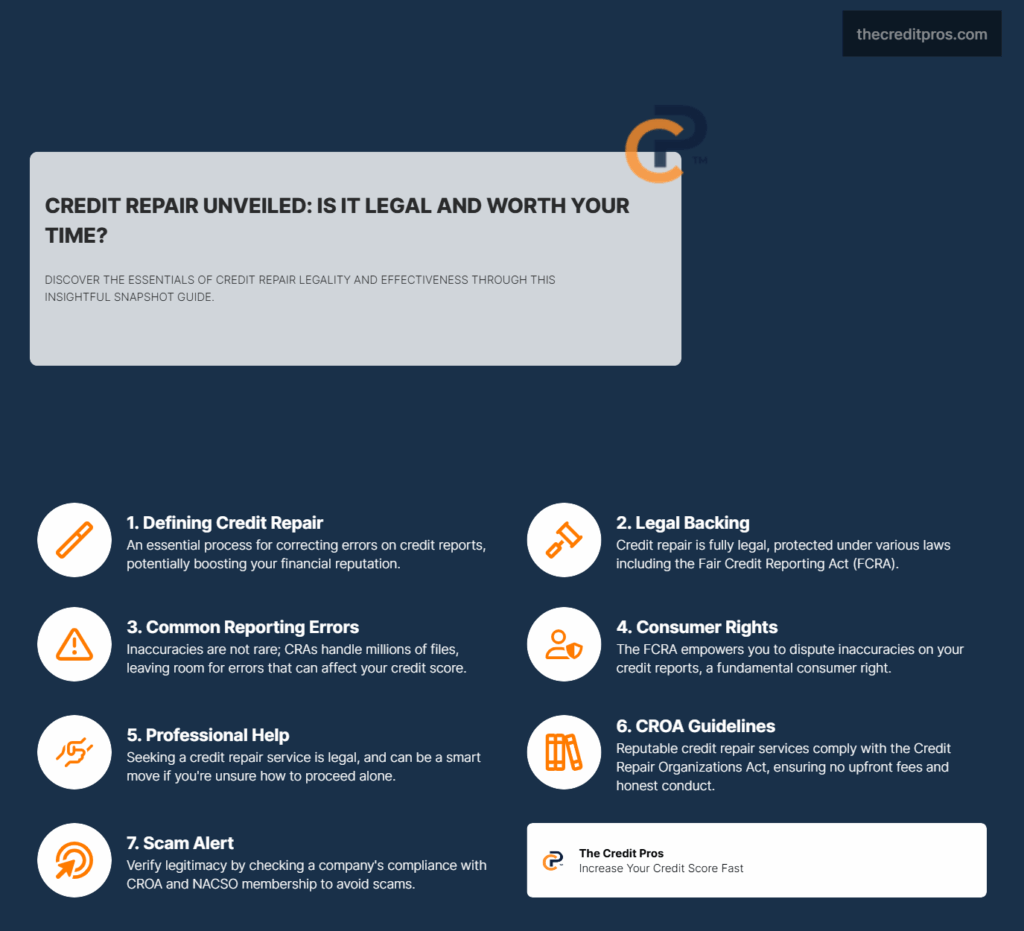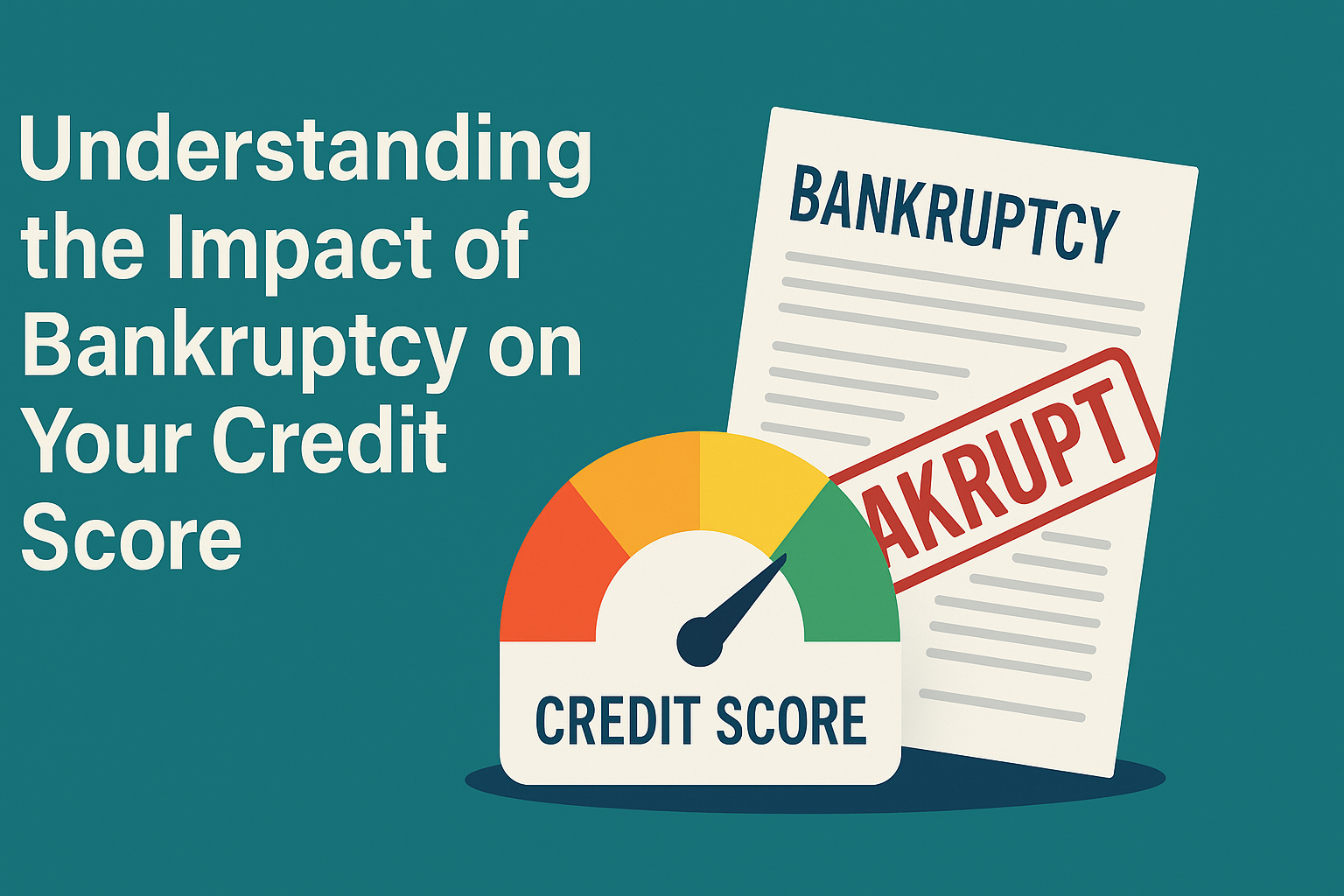Most people believe bankruptcy destroys your credit score for years, but what if the opposite could be true? While bankruptcy does appear on your credit report, the reality is far more complex than the seven-to-ten-year timeline everyone talks about. Your credit score might actually improve faster after filing than it would if you continued struggling with overwhelming debt, missed payments, and maxed-out credit cards. Understanding the bankruptcy credit score impact is crucial for anyone considering this option. The bankruptcy credit score impact varies based on individual circumstances and recovery strategies. By understanding the bankruptcy credit score impact, you can make informed decisions about your financial future.
The path to credit recovery after bankruptcy isn’t what most people expect. Some individuals see their scores climb higher than their pre-bankruptcy levels within just a few years, while others who chose Chapter 13 over Chapter 7 often rebuild credit faster despite the longer court process. The key lies in understanding how credit scoring actually works post-bankruptcy and why the months leading up to filing often cause more damage than the bankruptcy itself. Your approach to rebuilding in those crucial first 12-24 months can determine whether you’ll achieve a 750+ credit score or remain stuck in the rebuilding phase for years. Ultimately, understanding the bankruptcy credit score impact will empower better financial decisions moving forward.
The implications of the bankruptcy credit score impact should not be overlooked, especially when considering how to rebuild credit following bankruptcy. Recognizing the bankruptcy credit score impact is essential for your credit recovery strategy. The bankruptcy credit score impact can also vary depending on credit utilization before filing. Addressing the bankruptcy credit score impact effectively will lead to improved financial health. Understanding the nuances of the bankruptcy credit score impact can be a game changer. Comprehending the bankruptcy credit score impact helps in planning future financial moves. When evaluating options, the bankruptcy credit score impact must be at the forefront of your analysis.

Many find that the bankruptcy credit score impact is less severe than anticipated. Evaluating the bankruptcy credit score impact during the rebuilding phase is critical for success. In many cases, the bankruptcy credit score impact can be mitigated with proactive measures. Those aware of the bankruptcy credit score impact often take better steps toward recovery. The bankruptcy credit score impact should be a major consideration for anyone looking to rebuild their credit. The ultimate goal after understanding the bankruptcy credit score impact is to achieve financial stability. Taking the bankruptcy credit score impact into account allows for a more tailored recovery plan.
The Paradox of Pre-Bankruptcy Credit Damage: When Filing Actually Helps Your Score
The months preceding bankruptcy filing often inflict more severe credit damage than the bankruptcy itself. Credit scores typically decline dramatically during the lead-up period as individuals exhaust their resources attempting to maintain minimum payments on overwhelming debt loads. This pre-filing phase frequently involves a cascade of missed payments, collection accounts, and maxed-out credit utilization ratios that can drop scores by 100-200 points before bankruptcy papers are ever filed.
Credit scoring models weight recent payment history more heavily than older negative marks, creating a situation where ongoing financial struggles cause continuous score deterioration. A single 30-day late payment can reduce your score by 60-110 points, while multiple missed payments across several accounts compound this damage exponentially. When you’re already struggling with debt-to-income ratios exceeding 40%, each additional missed payment creates a deeper credit score decline than the eventual bankruptcy filing itself.
The bankruptcy credit score impact must guide your decisions during the rebuilding process. The bankruptcy credit score impact is a vital metric for tracking progress post-bankruptcy. The bankruptcy credit score impact highlights the importance of responsible credit usage.
In summary, the bankruptcy credit score impact provides a clear roadmap for recovery. Ultimately, acknowledging the bankruptcy credit score impact can lead to better financial outcomes. The bankruptcy credit score impact is often misunderstood but is essential in financial planning. Understanding the bankruptcy credit score impact enhances your ability to recover successfully.
As such, the bankruptcy credit score impact should be at the forefront of your rebuilding strategy. Incorporating the bankruptcy credit score impact into your strategy can yield significant benefits. Your awareness of the bankruptcy credit score impact will prepare you for future financial endeavors.
The concept of a “credit score floor” explains why individuals with severely damaged credit often experience minimal additional impact from bankruptcy. Once your score drops below 500-550 due to collections, charge-offs, and missed payments, bankruptcy filing may only cause an additional 10-50 point decline. This phenomenon occurs because credit scoring algorithms have already factored in your high-risk status through existing negative marks, leaving little room for further deterioration.
Post-bankruptcy credit utilization calculations reveal another paradoxical benefit of filing. Discharged debt eliminates the utilization component that was destroying your score, potentially improving this crucial factor from 100% utilization to 0% overnight. Credit utilization accounts for 30% of your FICO score, making this immediate improvement one of the most significant positive changes bankruptcy can provide to your credit profile.
Chapter 7 vs. Chapter 13 Credit Recovery: Understanding the Timeline Differences
Chapter 13 bankruptcy cases often produce faster credit score recovery despite involving a 3-5 year repayment plan, challenging the common assumption that shorter reporting periods automatically mean quicker recovery. The active repayment structure inherent in Chapter 13 creates ongoing positive payment history while the case remains open, demonstrating financial responsibility to future creditors. This continuous demonstration of payment reliability often outweighs the extended time commitment required for plan completion.
The partial debt repayment aspect of Chapter 13 fundamentally changes how creditors view your financial responsibility compared to Chapter 7’s total discharge approach. Creditors recognize that Chapter 13 filers voluntarily committed to repaying a portion of their debts rather than seeking complete elimination, creating a perception of greater financial integrity. This distinction becomes particularly valuable when applying for new credit, as manual underwriters often view completed Chapter 13 cases more favorably than Chapter 7 discharges. Emphasizing the bankruptcy credit score impact enables you to chart your financial future more effectively.
Mortgage lenders specifically demonstrate preferential treatment toward Chapter 13 completions, often reducing waiting periods and offering more competitive interest rates. FHA guidelines allow mortgage applications just two years after Chapter 13 completion with documented extenuating circumstances, compared to the standard four-year waiting period following Chapter 7 discharge. This accelerated timeline can save tens of thousands of dollars in rent payments and position you for homeownership years earlier than Chapter 7 alternatives.
The trustee payment system in Chapter 13 creates an additional layer of positive credit building that Chapter 7 lacks entirely. Each monthly payment made through the bankruptcy trustee establishes a documented history of consistent, court-supervised financial obligation fulfillment. This payment history often carries more weight with future creditors than traditional credit card payments because it demonstrates your ability to maintain financial commitments under legal oversight and structured repayment terms.
Strategic Credit Rebuilding: Maximizing the 12-24 Month Post-Bankruptcy Window
The immediate post-bankruptcy period represents the highest potential for rapid credit score improvement, yet many individuals miss this critical window by waiting too long to begin rebuilding efforts. Credit scoring models heavily weight recent positive behavior, making the first 12-24 months after discharge the optimal time for establishing new positive payment history. Waiting beyond this window means competing with your own improving credit history for score enhancement opportunities.
Secured credit cards should be obtained within 30-60 days of discharge rather than waiting months or years as commonly advised. The credit age component of your score begins building immediately upon account opening, and earlier applications typically receive approval with more favorable terms. Multiple secured cards from different issuers can accelerate rebuilding more effectively than single-card strategies, provided you maintain low utilization across all accounts and make payments consistently.
“Many people who file for bankruptcy find that they achieve a higher score than they had before filing, thanks to healthier financial management.”
Credit mix diversification becomes particularly important during the rebuilding phase because bankruptcy eliminates most existing credit relationships simultaneously. Your post-bankruptcy credit profile essentially starts from zero, making it crucial to establish both revolving credit (credit cards) and installment credit (auto loans, personal loans) within the first two years. This diversification demonstrates your ability to manage multiple credit types responsibly and accelerates score improvement beyond what single-product rebuilding can achieve.

Alternative credit data sources gain heightened importance during the post-bankruptcy rebuilding phase when traditional credit history is limited. Rent reporting services can add 12+ months of positive payment history to your credit reports immediately, while utility payment reporting provides additional positive data points. These alternative data sources often provide 20-40 point score improvements that can make the difference between approval and denial for traditional credit products during the rebuilding phase.
The strategic timing of credit limit increases versus new account applications requires careful consideration during rebuilding. Existing secured card limit increases improve your credit utilization ratio without adding new inquiries or reducing your average account age. However, new account openings become necessary once you’ve maximized existing credit lines and need additional credit mix diversity. The optimal approach involves requesting limit increases every 6-8 months while adding new credit types annually during the rebuilding phase.
Industry-Specific Credit Requirements: Employment, Housing, and Lending Considerations
Employment background checks evaluate bankruptcy differently than lending decisions, focusing more on recent financial behavior and job-relevant financial responsibility. Healthcare and education sectors typically show more flexibility regarding bankruptcy history compared to financial services or government positions requiring security clearances. Understanding these industry-specific perspectives allows you to target job opportunities strategically during your credit rebuilding phase.
The distinction between employment credit checks and lending credit evaluations becomes crucial for post-bankruptcy career planning. Employment screenings often focus on recent payment patterns, current debt levels, and overall financial stability rather than historical bankruptcy filings. Many employers care more about your current financial management capabilities than past financial difficulties, particularly when bankruptcy occurred due to medical expenses, divorce, or job loss rather than irresponsible spending patterns.
FHA mortgage qualification strategies can significantly accelerate homeownership opportunities for post-bankruptcy consumers through manual underwriting processes. While automated underwriting systems strictly enforce waiting periods, manual underwriting allows loan officers to consider extenuating circumstances, strong post-bankruptcy credit rebuilding, and stable employment history. This approach often reduces waiting periods by 12-24 months and provides access to competitive interest rates despite recent bankruptcy history.
Auto lending markets demonstrate the most accessibility for post-bankruptcy consumers, with specialized subprime lenders offering financing within months of discharge. However, optimal timing strategies can save thousands of dollars in interest costs by waiting 12-18 months to establish some positive credit history before applying. The difference between immediate post-bankruptcy auto loan rates (15-20% APR) and rates after modest credit rebuilding (8-12% APR) can exceed $5,000 over a typical loan term.
Manual underwriting processes across all lending sectors provide opportunities that automated systems cannot match for post-bankruptcy applicants. These human-reviewed applications allow you to explain circumstances, demonstrate financial rehabilitation, and present compensating factors like stable employment or significant down payments. Building relationships with local banks and credit unions often provides access to manual underwriting opportunities that national lenders may not offer through their standard channels.
Building a Stronger Credit Profile: Long-Term Recovery Strategies
Successful bankruptcy recovery frequently results in credit scores exceeding pre-filing levels within 3-5 years, challenging the misconception that bankruptcy creates permanent credit damage. This improvement occurs because bankruptcy elimination of overwhelming debt allows focus on positive credit building behaviors without the constant pressure of unmanageable monthly payments. The financial habits developed during recovery often prove more sustainable than the debt management strategies that preceded bankruptcy.
The psychological shift from debt management to wealth building fundamentally changes how you approach credit and financial decisions post-bankruptcy. Without overwhelming monthly debt payments consuming 40-60% of income, you can focus on building emergency funds, making strategic credit decisions, and developing long-term financial plans. This mental transformation often proves more valuable than the immediate credit score improvements because it creates sustainable financial behaviors that prevent future credit problems.
Emergency fund development becomes a cornerstone of post-bankruptcy financial success because it prevents future credit damage during unexpected financial challenges. A fully funded emergency fund of 3-6 months’ expenses eliminates the need to rely on credit cards during job loss, medical emergencies, or major home repairs. This financial cushion allows you to maintain perfect payment history even during challenging periods, protecting the credit score improvements achieved during your rebuilding phase.
The transition from rebuilding credit to optimizing credit for major purchases represents a crucial evolution in your post-bankruptcy financial journey. Once you’ve achieved scores in the 650-700 range, focus shifts from basic credit building to strategic credit positioning for home purchases, business financing, or investment opportunities. This optimization phase involves timing applications strategically, managing credit inquiries carefully, and positioning your credit profile for the most favorable terms on significant financial commitments.
Many post-bankruptcy consumers achieve 750+ credit scores within five years through consistent application of sound financial principles learned during their recovery process. These high scores often exceed their pre-bankruptcy levels because the financial discipline required for successful recovery creates better long-term credit management habits. The compound benefits of consistent on-time payments, low credit utilization, and diversified credit mix create a stronger credit profile than many people achieve without experiencing financial difficulties that led to improved financial education and discipline.
Breaking the Bankruptcy Credit Myth: A Path to Financial Recovery
The conventional wisdom surrounding bankruptcy’s impact on credit scores doesn’t tell the complete story. While bankruptcy does create immediate challenges, the reality is that many individuals achieve stronger credit profiles post-bankruptcy than they maintained during their pre-filing financial struggles. Understanding the bankruptcy credit score impact is essential to overcoming these challenges. The key lies in understanding that the months of missed payments, maxed-out cards, and collection accounts preceding bankruptcy often inflict more lasting damage than the filing itself. Chapter 13 cases frequently produce faster recovery timelines despite longer court involvement, and strategic rebuilding efforts in the crucial first 24 months can accelerate your journey to excellent credit.

Your bankruptcy isn’t the end of your credit story – it’s often the beginning of a more disciplined and sustainable financial chapter. The elimination of overwhelming debt payments creates space for building emergency funds, establishing positive payment history, and developing the financial habits that lead to long-term success. Many post-bankruptcy consumers not only recover their previous credit standing but exceed it entirely, achieving 750+ scores through the financial discipline learned during their recovery process. Remember, the bankruptcy credit score impact is a crucial consideration in your financial transformation.

